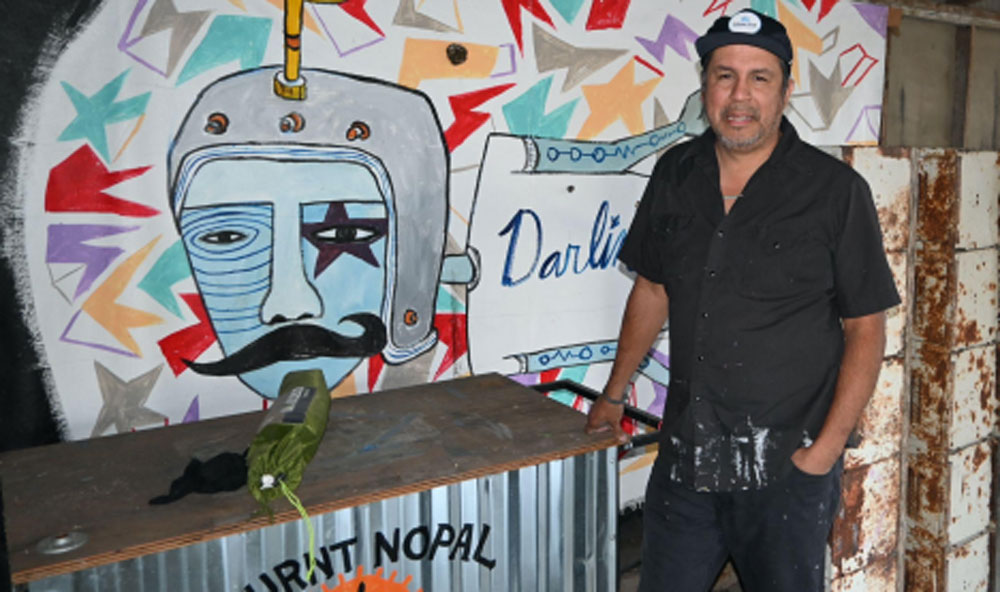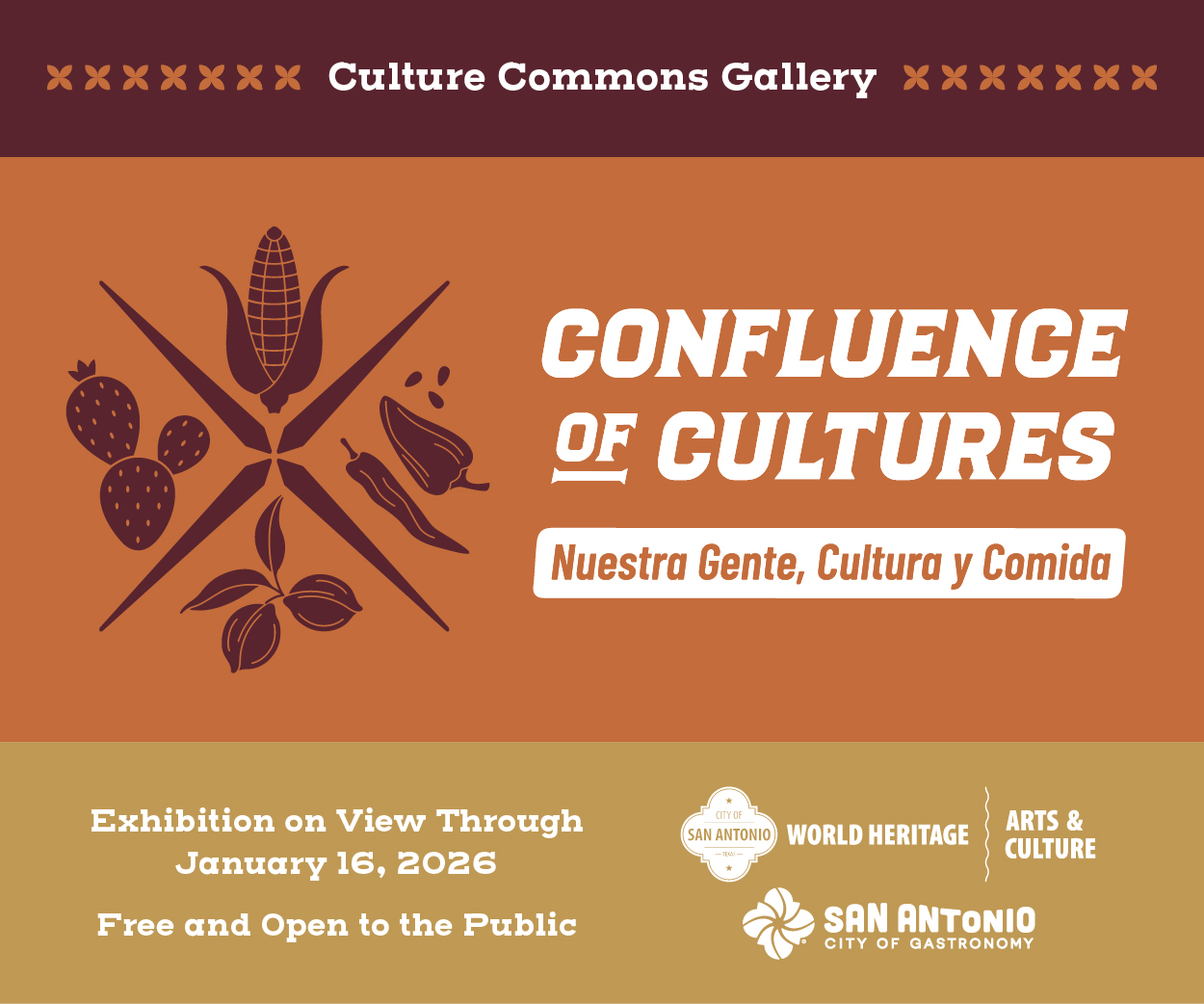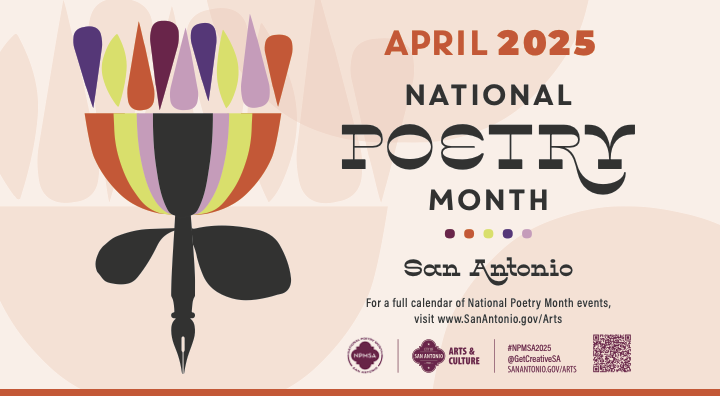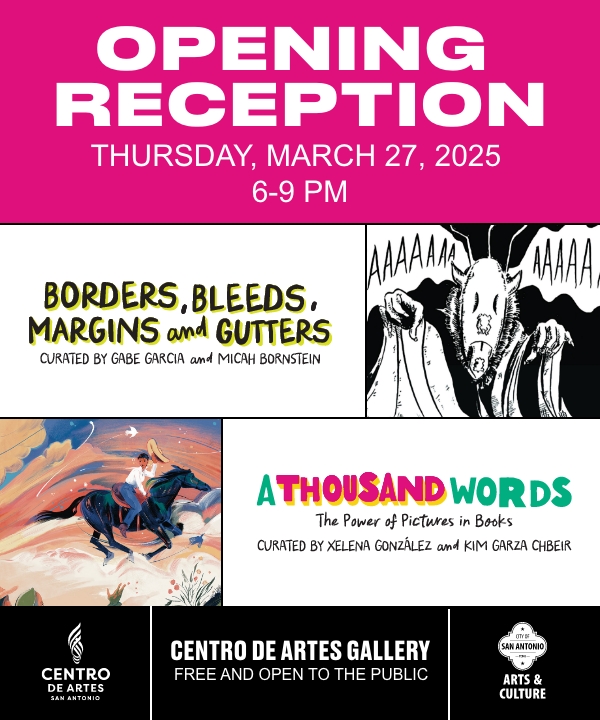In 1990 Chicano muralism in San Antonio had fallen onto hard times. The more than 50 murals completed at the Cassiano Homes were beginning to fade, unable to survive the sun’s burning rays. City funding for murals in San Antonio’s Westside had also dried up. Cruz Ortiz, who had never painted a mural, was convinced by fellow artist Juan Ramos and musician Manny Castillo to help organize a new grassroots organization dedicated to muralism. Their efforts in 1994 revived muralism in San Antonio and, as a result, the Chicano public art movement is alive and thriving today. This account explains how Cruz Ortiz, a key player in that artistic revival, brought public art back to the Westside.
Ortiz’s American roots date back to the 1940s when his grandfather brought his Latin jazz musicians, Cruz Ortiz y Los Falcones, to tour in the United States. His grandfather moved his family along with his son, Cruz Ortiz II, from Monterrey to Houston in the early 1950s. A high school football star, Cruz II [Ortiz’s dad] enlisted in the Army and was serving his country when President Lyndon B. Johnson chose to intervene in the Dominican Civil War in 1965. Dominican rebels captured Cruz’s dad after he had been tasked with burying a fellow soldier who had been killed. Although his dad was rescued after a few weeks, the ordeal haunted the dad for the rest of his life.
Early in his life, Cruz Ortiz’s parents committed to a Jesuit missionary unit engaged in religious and social services in the border region of West Texas and Southern New Mexico. To undertake their missionary work, Ortiz’s family gave up their home and life in Houston, traveling with their three children in a pickup truck to the border city of El Paso. The younger Ortiz recalls the many visits to Juarez, Mexico where his family joined the Jesuit missionaries in delivering food and attending to the social needs of those living next to the large urban trash dumps of Juarez, the poorest families in Mexico. The experience
gave Ortiz a greater understanding of poverty and deprivation, what Jacob Reis documented with his photographs in “How The Other Half Lives.”
Missionary work on the Border was consuming and ultimately the Ortiz family moved to Schertz, Texas where they continued working with the Jesuits. The move also enabled young Cruz to start high school in a community just north of San Antonio. Only a handful of Latino kids attended the high school, and Ortiz found it perplexing that the counselors pressed him to enroll in trade-related classes. Ortiz enrolled in vocational classes, specializing in welding, which he mastered over a period of four years. When he was not taking those classes, Ortiz expanded his artistic skills by learning printmaking and silkscreening. Numerous high school friends played in Punk-Rock bands, and they asked Ortiz to design and print posters advertising their music gigs. He also silk-screened T-shirts with band images and slogans.
When Ortiz finished high school, he found work in the construction trades, working principally in roofing and gutter installations. Ortiz also attended San Antonio College [SAC] right out of high school, mostly at night after work. As a roofer, he did well enough to buy his own truck and employ his own crew. Over a three-year period, Cruz served as the principal breadwinner for his parents who struggled to find stable employment and frequently drifted into homelessness.
Cruz Ortiz credits Manny Castillo, a drummer whom he met at TacoLand, and artist Juan Ramos for supporting his early efforts to become an artist. Ortiz’s teen years had been limited to the small projects designing and printing posters and T-shirts. Manny Castillo was a musician who loved art, and Juan Ramos was an emerging artist who played in a band and loved to paint. The three bonded, founding in 1993 the San Anto Cultural Arts, a vulnerable Westside non-profit cultural organization. San Anto’s goals were straightforward–to beautify the Westside with murals. Ortiz painted his first mural “Educacion” on the street corner of Chupaderas and Guadalupe.
Ortiz completed his college education at UTSA in 2000 and took a job teaching high school. While at UTSA, his approach to art had taken on new meaning and purpose following the discovery of Chicano history and Chicano art books in the campus library.
Ortiz’s repertoire has evolved over two decades. During that time he has attained international recognition. A Residency with ArtPace in 2005 greatly enhanced his art career. In the years between 2004-2006, Ortiz exhibited in Dallas, Texas; Paris, France; San Juan,
Puerto Rico; and Limerick, Ireland. In 2018 the San Antonio College Alumni Magazine featured Cruz Ortiz calling him “A teacher. A Political commentator. And a man of many ideas.”
Ortiz’s major breakthroughs came in 2014 when Absolut Vodka chose his image of a boot or a “spicy Serrano kick” design for the launch of the Absolut Texas bottle in 2014. His wife and business partner, Olivia Flores Cruz, encouraged him to expand his design and branding work and it paid off handsomely. The Vodka contract enabled the Ortiz family to purchase an old railroad station in Southtown and convert it into their present-day compound of three studios, a gallery building, and their home.
Ortiz’s artistic range is expansive. Cruz told Chris Warren of San Antonio Magazine as he described his artistic approach, “The closest thing (to what I do) would be a researcher who documents and tries to figure out his surroundings, relationships to others and the universe.” Ortiz expands on that search for relationships in most of his creative works, including his mural “Hello Darlin’ Map” located inside the AT&T Center where his beloved Spurs play. His AT&T painting features several Tejano iconic images such as a cowboy boot, a lotto ticket, corn for deer, and a can of cold beer.
Many of Ortiz’s paintings reflect on historical and cultural subjects. When I visited the Ortiz studio recently, he had just completed a painting of Juan Nepucemo Cortina [1824-1894], a leader of border Mexicanos. Cortina played a prominent role in the native Tejano resistance movement in the aftermath of Texas joining the
Union. Ortiz had familiarized himself with the history of the South Texas border wars and the persona of General Cortina. The border wars began in 1859 when Cortina came to the aid of a former ranch hand brutally arrested by the Brownsville city marshall. Cortina shot the marshall, igniting one of the most famous of the post-U.S.-Mexican War conflicts. Ortiz’s painting graphically depicts the shooting of the marshall.
Cruz Ortiz is unique among Chicano artists in that he has spread his artistic talents in many different avenues. Today he mainly paints, designs, and prints, leaving muralism to the younger generation of Chicano artists working with San Anto Cultural Arts. He is proud of the San Anto artistic work, and a younger cohort of artists in return recognize that Cruz Ortiz helped to inspire a new phase in Chicano muralism.
Cruz Ortiz: A Reviver of Chicano Murals










